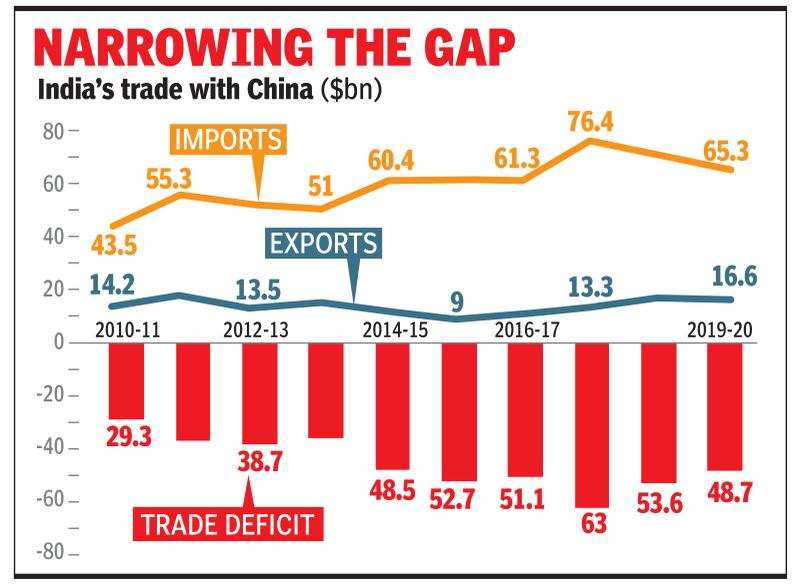Relevance: Prelims: Economy

Context:
• India’s approach to development in the last 2-3 decades has been service sector-led and has undermined manufacturing; at the same time, China has made rapid strides in manufacturing.
Uneven balance between the two in their development stages:
• China has developed capacities across a wide spectrum in applied engineering and chemical processes and has attempted to capture global markets.
• India on the other hand is stuck with various low-end services, many of which are of “body-shopping”, the scope for which is rapidly declining.
• It has begun to lose abilities in manufacturing, even in fields where it still has some presence, e.g., pharmaceuticals (68% dependence on China, for active ingredients) and auto-industry (15-20% dependence on China for electricals, electronics and fuel injection), to name two.
• The list of items on which India depends on Chinese imports include solar panels, metal-ware, cloth-ware, industrial machinery, a range of consumer electronics like mobile phones and TVs, and even low-end products like furniture, kitchenware, toys, kites or incense.
Reasons behind the trade deficit between two countries:
• Most Indian exports are raw materials or in that genre (low-tech and low employment, like ores, rare earths, chemicals), while the imports are in manufacturing (high-tech). Such a trade pattern inevitably results in unequal terms of trade in time.
• Even in areas where India has some competence, critical inputs are imported from China.
• A sustained current account deficit has led India to multilaterals for loans even for undertaking earthworks, and then use the foreign exchange to balance the current account.
• Since most multilaterals require global tendering for awarding contracts, Chinese companies creep-in through (at times) questionable routes to dig tunnels or make railroads in India, making Indian industries functionally further unfit.
• India is thus progressively exporting meaningful jobs to China, draining precious foreign exchange, and losing prowess in modern technologies and manufacturing.
Five components of a proposed policy:
• Government and industry need to work closely and create mutual trust for promoting industries through tariffs, subsidies, land and labour law easing, infrastructure, etc. Like the MITI of yesteryears in Japan or South Korea more recently, the government must help national companies to grow and become internationally competitive. That is what China did.
• Approaches to gain economies of scale need to be put in place to overcome India’s shortcoming of having 66 million MSMEs. A “one-state/district-one product approach” can bring together SMEs to form a single giant unit. Again, the state needs to initiate this process by means of planning.
• Need to invest heavily in targeted research and development, for which private-public sector partnership is essential. Indian government and defence labs along with research and development Departments of private and public sectors require joining hands for this. Expenditure on research and development should rise 3-4 times from 0.7% of GDP at present.
• Investment in education, training, and human capital formation should rise from the current 3% to 6% of GDP, with greater industry-based training, focus on quality, and emphasis on STEM.
• Contain brain-drain out of India (from top engineering and medical colleges) to foreign shores. Partnerships with the best universities in the West is one approach to provide quality education here.
Conclusion:
• India needs a strong industrial policy for development, employment and facing a belligerent China.
For more such notes, Articles, News & Views Join our Telegram Channel.
Click the link below to see the details about the UPSC –Civils courses offered by Triumph IAS. https://triumphias.com/pages-all-courses.php

